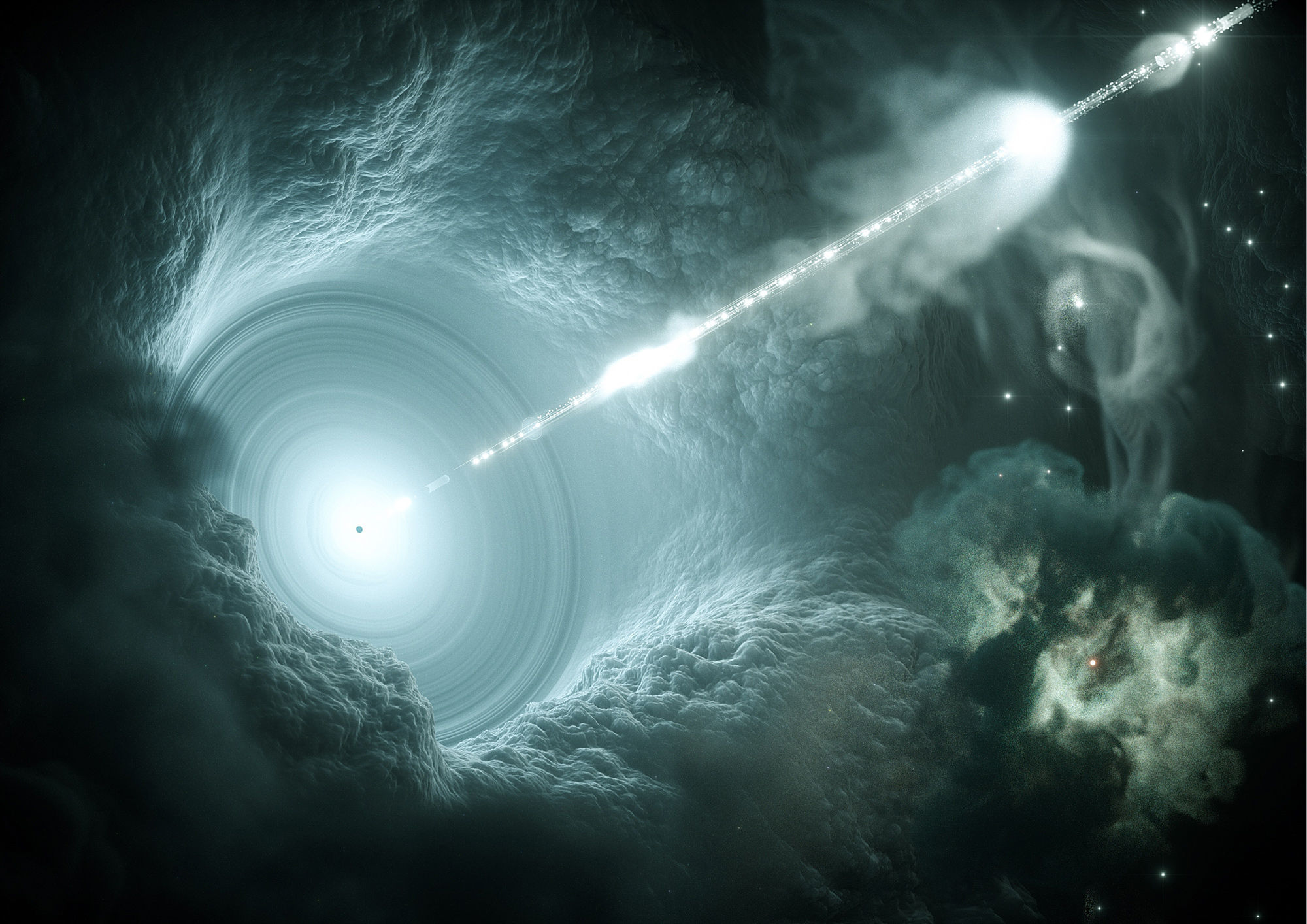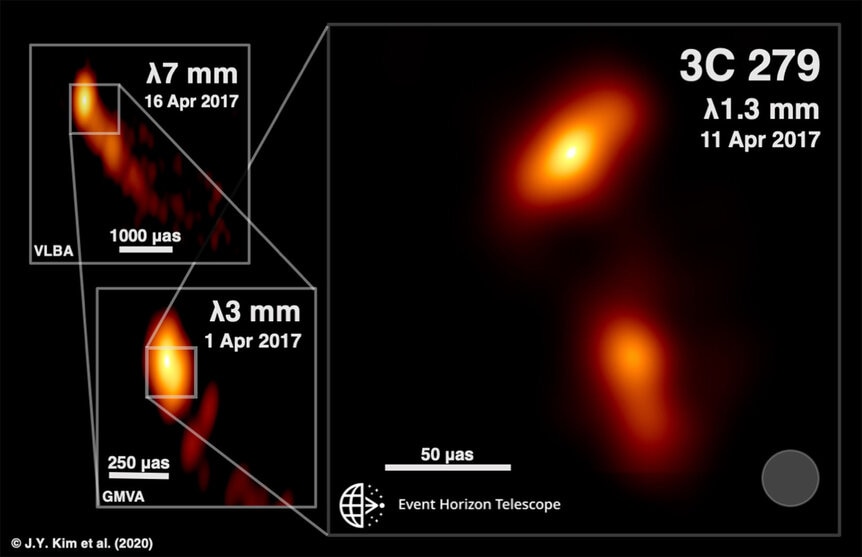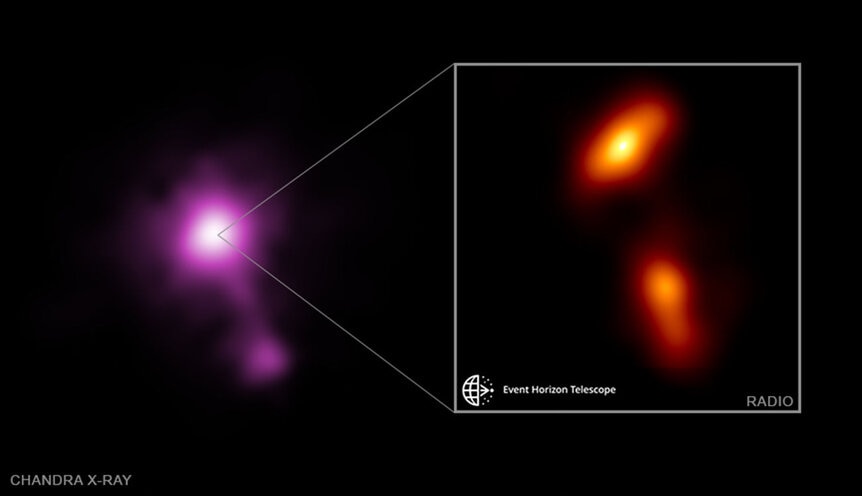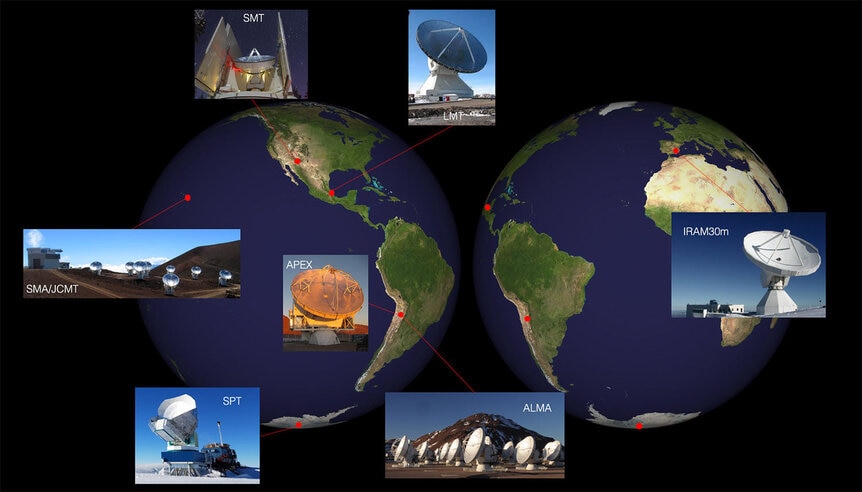Create a free profile to get unlimited access to exclusive videos, sweepstakes, and more!
Down the mouth of a monster: Event Horizon Telescope stares down a blazar's jet

Just one year ago, the amazing Event Horizon Telescope team released the highest-resolution images of a nearby supermassive black hole — well, "nearby" meaning 55 million light years away in the center of the huge galaxy M87 — revealing unprecedented detail in features just outside the Point of No Return.
Around the same time they took that data in April 2017, they also pointed this powerful array of individual radio telescopes at a far more distant galaxy: 3C279. This galaxy is a blazar, blasting out energy across the electromagnetic spectrum, from radio waves to super-high-energy gamma rays. Like M87, the source of its power is a supermassive black hole, one with 800 million times the mass of the Sun.
And oh yeah, 3C279 is over 5 billion light years from Earth. Now you can see why we call M87 "nearby."
3C279 is what we generically call an active galaxy, its nucleus generating more energy than the rest of the galaxy combined. Like many of these kinds of overachievers, it's blasting out a pair of jets, vast beams of matter and energy that scream away from the center at brain-frying velocities: Much of this material is moving at 99.5% the speed of light, fast enough to cross our entire solar system in a matter of hours.
And that’s why the Event Horizon Telescope (or EHT) aimed its sharp eye 3C279's way: Astronomers don't really understand how these jets are generated, so we want to peer as closely to their source as possible. The resolution of this telescope is so amazingly sharp that it could see features as small as 0.4 light years across — mind you, this is in an object that’s halfway across the observable Universe!
The two images on the left are wider field views taken by different radio telescope, with the EHT image on the right. The two blobs represent radio wave emission from the jet. The bottom blob is elongated in the direction the material is moving, as you’d expect. But the top blob, that’s different. Buried somewhere in there, presumably at the center, is the supermassive black hole. But the blob is clearly elongated perpendicularly to the other one, almost at a right angle. That's… weird.
What you're seeing there is the base of the jet, the place where the particles are being accelerated to very nearly the speed of light. I'd expect it to be aligned with the jet itself, but the fact that’s it's not could be due to many different things. The authors of the paper (of which there are quite a lot) propose many possible reasons.
One is that the jet is bent near the base, with a big kink in it. Coincidentally, we are looking almost exactly down the maw of this beast; the jet is a mere 2° away from being aimed right at us. A small bend in it that happens to go across our line of sight could explain the weird elongations.
Incidentally, because we are looking down along its length and see it foreshortened, the entire jet's physical length is millions of light years. We're only seeing the very innermost part of it in the EHT shot.
Another possibility — and I love this — is that the jet itself is helical, spiraling away as it moves out like a corkscrew! The sculpting force behind the jet may be an extremely powerful magnetic field embedded in a disk of material swirling around the black hole, called an accretion disk. The magnetic field gets wound up as the material orbits in the disk. As matter is lofted away from the disk it takes the spinning magnetic field with it, creating this vortex. If that’s the case, we may be seeing different blobs of material ejected from the disk, smeared out along the corkscrew, making it look elongated.
Incredibly, this gets even more mind-bending: Over the four days of EHT observations, the material can be seen to physically move:
Holy magnetohydrodynamics! You can actually see that lower blob move away from the galaxy's center over the course of less than a week! Brightness changes in the upper blob may be due to changes in the accretion disk as it whirls madly around the black hole, too.
Reminder: This is happening 50 billion trillion kilometers away.
Observations like this will hopefully help astronomers what powers these jets, what focuses them, and how they're coupled to the black hole and the accretion disk. It’s not known if the rapidly spinning black hole powers the jet, or the accretion disk, or both. Sometimes there are powerful flares of gamma rays that erupt from the central source, and then blobs of energy are seen moving up along the jet. How does that work? It may be generating shock waves or turbulence in the jet, but no one really knows.
More observations of 3C279 are planned for EHT, and maybe more clues to this process will be found. Eventually more telescopes will be added to the array, too, increasing its ability to see faint, small sources, even ones billions of light years away. This is just the start for EHT. Imagine what it'll be able to do when it really gets going


















